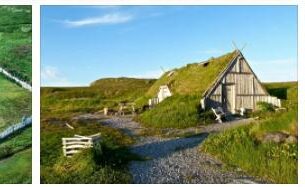Geography of Powell County, Montana
Powell County, located in the western part of the state of Montana, is known for its stunning mountain landscapes, pristine wilderness areas, and abundant outdoor recreational opportunities. The county’s geography, characterized by rugged terrain, majestic peaks, and numerous waterways, plays a significant role in shaping its climate, ecosystems, and human activities.
Location and Borders
Powell County is situated in western Montana, bordered by Lewis and Clark County to the north, Broadwater County to the east, Deer Lodge County to the south, and Granite County to the west. The county seat is the city of Deer Lodge, which serves as a gateway to the surrounding mountains and national forests. Check Areacodesexplorer.com to learn more.
Topography and Landforms
The topography of Powell County is dominated by the Rocky Mountains, with rugged peaks, deep valleys, and dense forests defining the landscape. The county is home to several prominent mountain ranges, including the Flint Creek Range, the Garnet Range, and the Powell Mountain Range.
Elevations in Powell County range from around 3,000 feet (914 meters) in the valleys to over 10,000 feet (3,048 meters) in the highest peaks. The county’s rugged terrain and steep slopes make it a popular destination for outdoor enthusiasts, with opportunities for hiking, camping, hunting, fishing, and wildlife viewing.
Rivers and Lakes
Powell County is traversed by several rivers and streams, including the Clark Fork River, the Blackfoot River, and the Little Blackfoot River. These waterways provide important habitat for fish such as trout, salmon, and whitefish, as well as recreational opportunities for fishing, boating, and kayaking.
In addition to its rivers, Powell County is also home to several lakes and reservoirs, including Georgetown Lake, Dry Cottonwood Reservoir, and Upper and Lower Holter Lakes. These bodies of water provide additional opportunities for fishing, boating, swimming, and picnicking, as well as serving as important habitats for waterfowl and other aquatic species.
Climate
The climate of Powell County varies depending on elevation and location within the county, but is generally characterized by cold, snowy winters and warm, dry summers. The region experiences four distinct seasons, with temperatures ranging from below freezing in the winter to highs in the 80s Fahrenheit (around 27 degrees Celsius) in the summer.
Winters in Powell County are cold and snowy, with temperatures often dropping well below freezing and snowfall accumulating throughout the season. The county’s mountainous terrain and high elevations contribute to its cold climate, with temperatures often colder at higher elevations than in the valleys.
Summers in Powell County are warm and dry, with temperatures typically ranging from the 70s to the 80s Fahrenheit (around 21 to 27 degrees Celsius) during the day and dropping into the 40s and 50s Fahrenheit (around 4 to 10 degrees Celsius) at night. Thunderstorms are common during the summer months, bringing heavy rain, lightning, and occasional hail to the region.
Spring and fall bring transitional weather patterns, with mild temperatures and changing foliage as the region transitions between seasons. These shoulder seasons are often considered the best times to visit Powell County, offering comfortable temperatures and clear skies for outdoor activities.
Vegetation and Wildlife
The diverse geography and climate of Powell County support a variety of vegetation types, including forests, grasslands, and alpine meadows. Coniferous forests such as pine, fir, and spruce dominate the landscape at higher elevations, while deciduous forests such as aspen and cottonwood are more common in the valleys.
Mammals such as deer, elk, and moose are common in Powell County, as are a variety of bird species such as eagles, hawks, and owls. The county is also home to several species of fish, including trout, salmon, and whitefish, which inhabit its rivers, streams, and lakes.
In addition to terrestrial habitats, Powell County is home to several wetland areas, including marshes, bogs, and riparian zones along the banks of its rivers and streams. These wetland ecosystems provide important habitat for waterfowl, shorebirds, and other aquatic species, as well as serving as breeding grounds for migratory birds such as ducks and geese.
Human Impact and Development
Throughout history, the geography of Powell County has played a significant role in shaping human settlement and development patterns in the region. Native American tribes such as the Salish and the Kootenai inhabited the area for thousands of years, relying on the land and waterways for sustenance and cultural traditions.
In the 19th and 20th centuries, European settlers began to establish farms, ranches, and towns in Powell County, drawn by the fertile soils and abundant natural resources. Today, the county is a mix of rural communities, wilderness areas, and recreational destinations, with residents and visitors alike drawn to the area’s natural beauty, outdoor recreational opportunities, and high quality of life.
The geography of Powell County, Montana, is characterized by its stunning mountain landscapes, pristine wilderness areas, and abundant waterways. From the peaks of the Rocky Mountains to the valleys of the Clark Fork River, the county offers a wealth of opportunities for outdoor recreation, wildlife viewing, and cultural exploration. Whether hiking in a national forest, fishing in a clear mountain stream, or exploring a historic mining town, visitors and residents alike are sure to be captivated by the scenic landscapes and rich natural heritage of Powell County.


